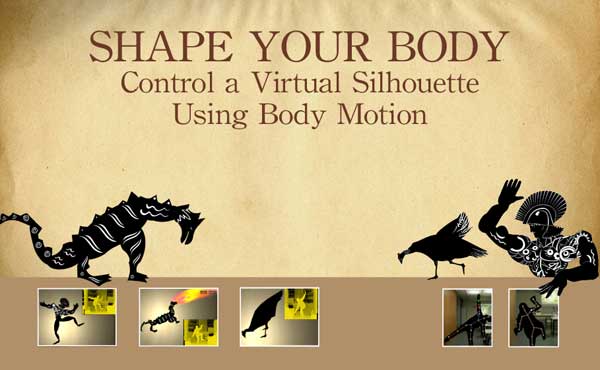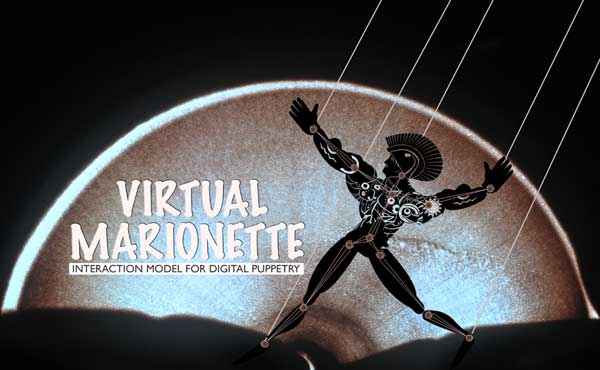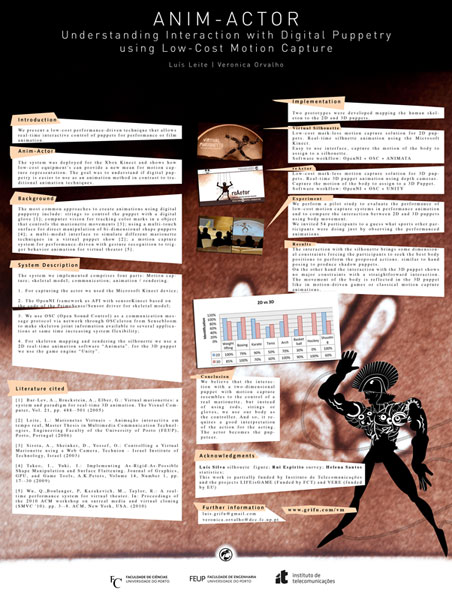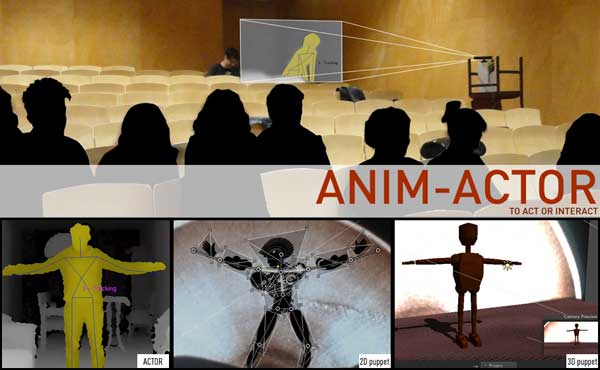Authors: Leite, L., Orvalho, Veronica
Year: 2011
This article was published in ACE 2011 (ACM Digital Library)
Anim-actor is an experiment to understand user interaction with biped puppets using low cost motion capture and is a part of our main research in digital puppetry.
Our goal was to study how non expert artistic (animators, performers, puppeteers) interact with puppets using their body””””s as controllers in different actions and different puppets in particular with 2d / 3d puppets.
We conducted an experiment with 54 participants using the Microsoft Kinect as interface.
The interaction with the 3d puppet was very natural like a player in a motion-driven game or a actor in a motion capture system.
The Interaction with a 2d puppet was a really challenge to the participants because it presented some constraints and didn””””t reflect all the body movements. The participants instead of reproducing the action with their body””””s, tried different approaches, using their body””””s as a indirect controller., like pulling the strings from a marionette or using their hands to produce silhouette shadows . In this way, interacting with a 2d puppets is similar to the marionette manipulation, and the “puppeteer” becomes an interactor.





